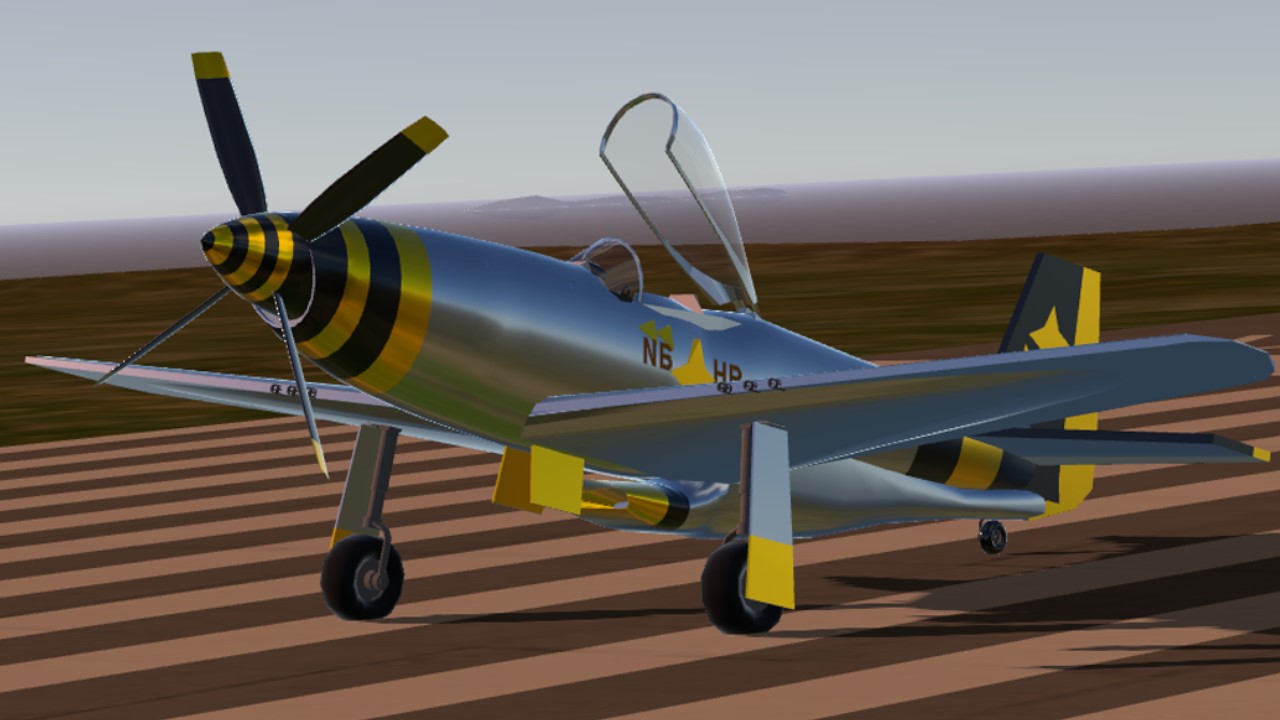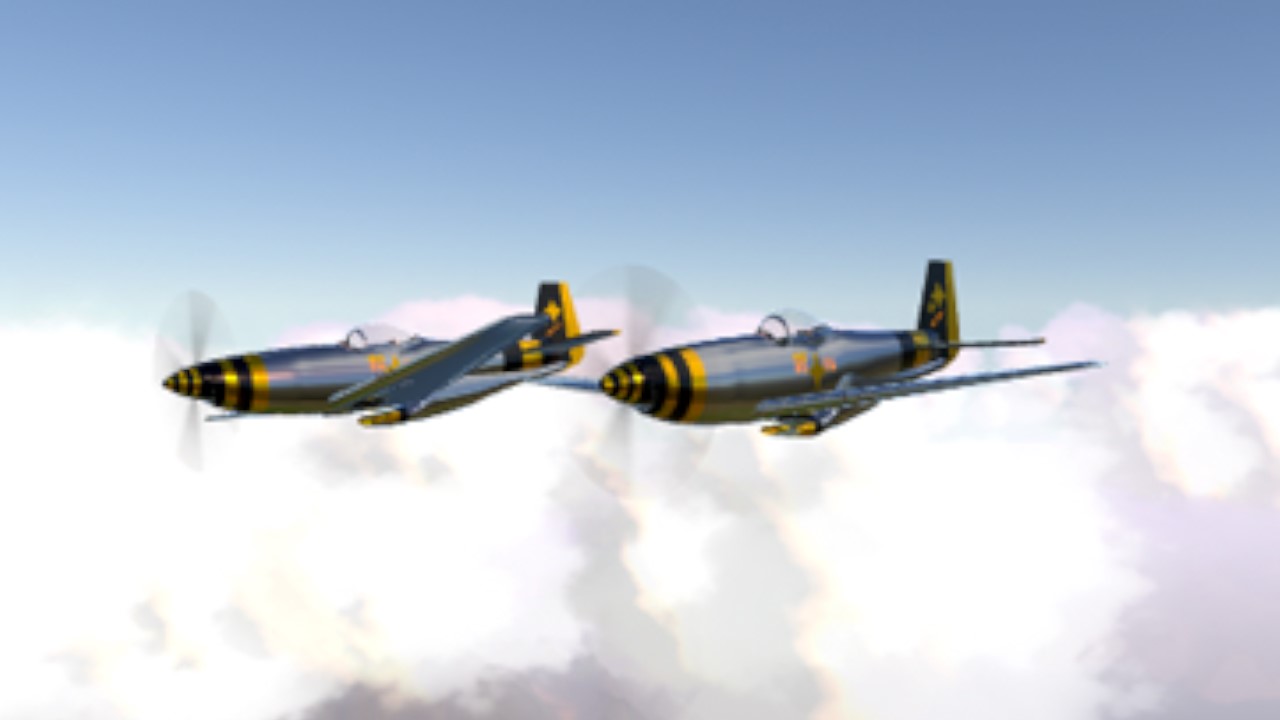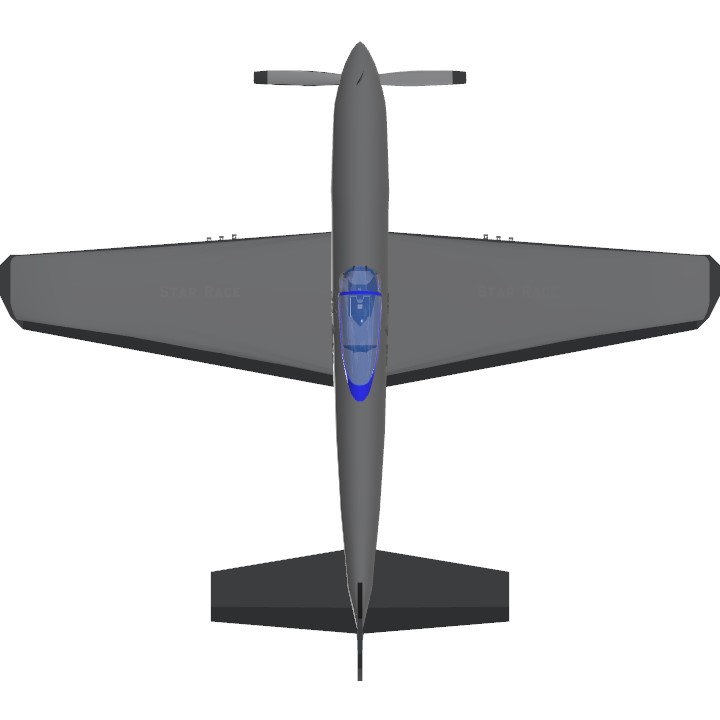This is a popular plane in simpleplanes and the most famous prop fighter in ww2 Now it's my time to build it
Hello guys! I present to you the P-51D!
Wiki about P-51D
The North American Aviation P-51 Mustang is an American long-range, single-seat fighter and fighter-bomber used during World War II and the Korean War, among other conflicts. The Mustang was designed in April 1940 by a team headed by James Kindelberger[5] of North American Aviation (NAA) in response to a requirement of the British Purchasing Commission. The Purchasing Commission approached North American Aviation to build Curtiss P-40 fighters under license for the Royal Air Force (RAF). Rather than build an old design from another company, North American Aviation proposed the design and production of a more modern fighter. The prototype NA-73X airframe was rolled out on 9 September 1940, 102 days after the contract was signed, and first flew on 26 October.[6][7]
The Mustang was designed to use the Allison V-1710 engine, which had limited high-altitude performance in its earlier variants. The aircraft was first flown operationally by the RAF as a tactical-reconnaissance aircraft and fighter-bomber (Mustang Mk I). Replacing the Allison with a Rolls-Royce Merlin resulted in the P-51B/C (Mustang Mk III) model, and transformed the aircraft's performance at altitudes above 15,000 ft (4,600 m) (without sacrificing range),[8] allowing it to compete with the Luftwaffe's fighters.[9] The definitive version, the P-51D, was powered by the Packard V-1650-7, a license-built version of the two-speed, two-stage-supercharged Merlin 66, and was armed with six .50 caliber (12.7 mm) AN/M2 Browning machine guns.[10]
From late 1943, P-51Bs and P-51Cs (supplemented by P-51Ds from mid-1944) were used by the USAAF's Eighth Air Force to escort bombers in raids over Germany, while the RAF's Second Tactical Air Force and the USAAF's Ninth Air Force used the Merlin-powered Mustangs as fighter-bombers, roles in which the Mustang helped ensure Allied air superiority in 1944.[11] The P-51 was also used by Allied air forces in the North African, Mediterranean, Italian, and Pacific theaters. During World War II, Mustang pilots claimed to have destroyed 4,950 enemy aircraft.[nb 1]
Replica Long Range WW2 Fighter
Controls
Standart SP Controls
AG2 - Canopy
Screenshots with P-51 D
Interesting Facts
I take a Fuselage, by @Seemeing
P-51D - My Favorite WW2 plane
I use a Standart SP Landing gears and parts from Jundroo's P-51
Specifications
Spotlights
- This craft is curated
- VeroViper 4.0 years ago
General Characteristics
- Predecessor P-51 D
- Created On Windows
- Wingspan 47.5ft (14.5m)
- Length 42.1ft (12.8m)
- Height 15.8ft (4.8m)
- Empty Weight 8,932lbs (4,051kg)
- Loaded Weight 13,471lbs (6,110kg)
Performance
- Horse Power/Weight Ratio 0.371
- Wing Loading 27.3lbs/ft2 (133.5kg/m2)
- Wing Area 492.7ft2 (45.8m2)
- Drag Points 3248
Parts
- Number of Parts 176
- Control Surfaces 10
- Performance Cost 739














:) interesting
@Erc90F4RU easily correctible.
@ChiChiWerx its not my fuselage with canopy. fuselage made by Seemeing
Why the hinged canopy? As anyone who's watched "Empire of the Sun" will know, the D-model Mustang had a sliding canopy. But why? Well, rear-hinged ("clamshell") canopies tend to fly off in the slipstream and most aircraft of this era could fly with the canopies open, hence the sliding canopies. Though the earlier pre-"Malcolm Hood" P-51s (As, Bs and C models) had a canopy where the left-hand side dropped down to allow access into the cockpit, as well as sliding panels, they were rapidly replaced by sliding canopies with the "Malcolm Hood" and bubble canopy versions. Even the earlier B-47s had a sliding canopy, which the pilot could open in flight (at lower speeds and altitudes, of course), though it was later replaced by a clamshell-type canopy.
It came out beautifully.
@Aviationcheesesticks oh... ok
@Erc90F4RU he's my friend
@Phoebe oh, now question
you know av in discord?
@Phoebe wat